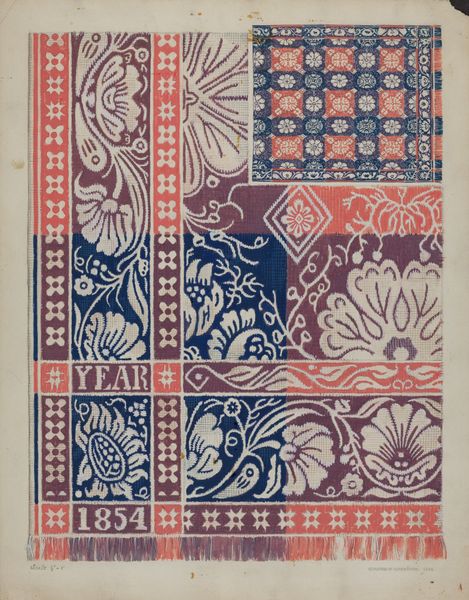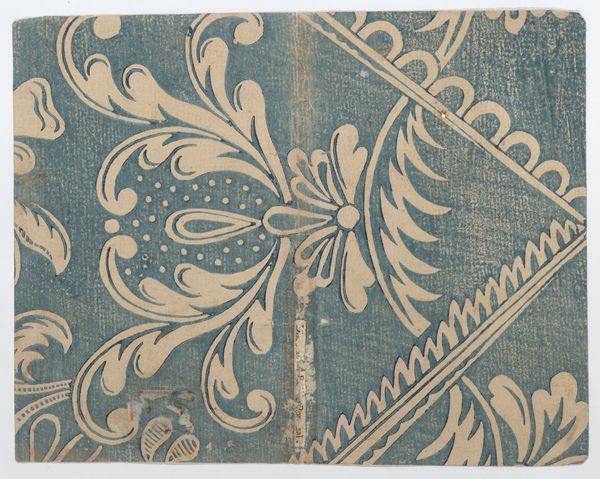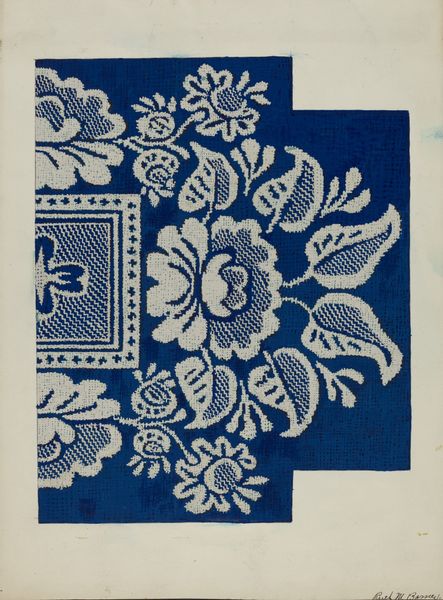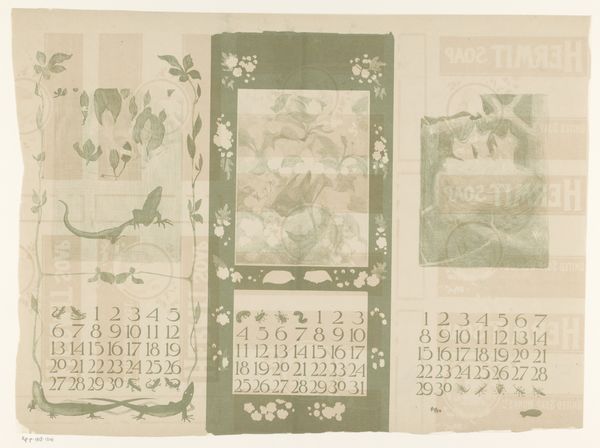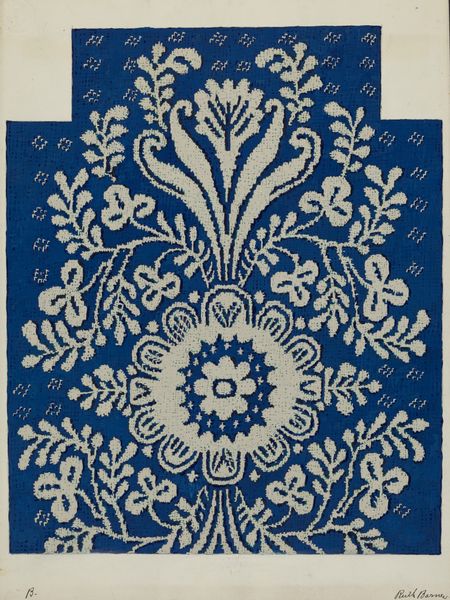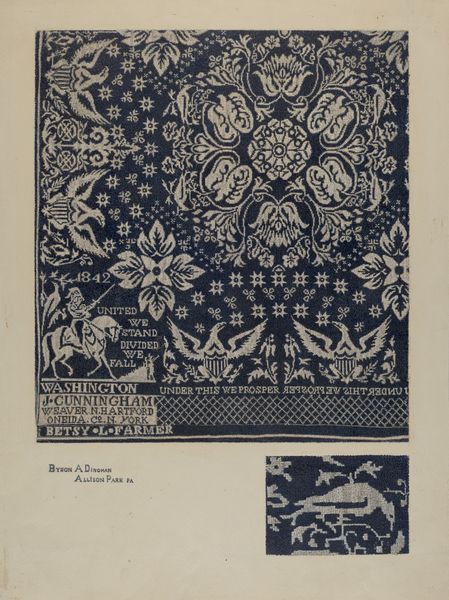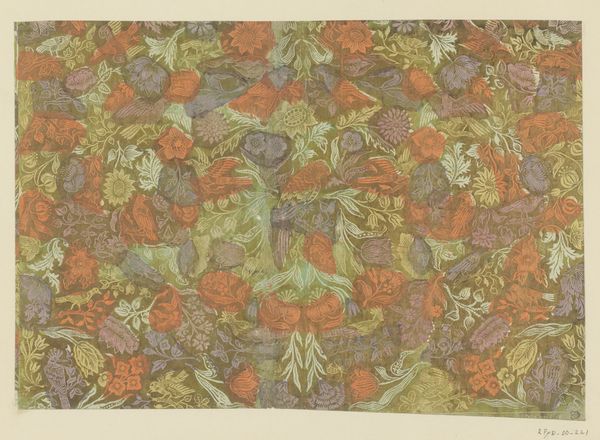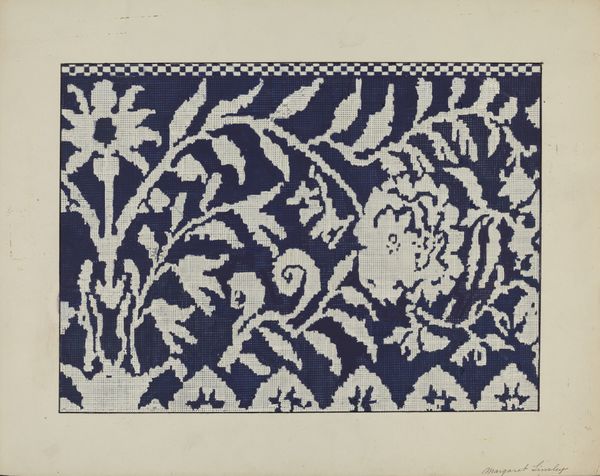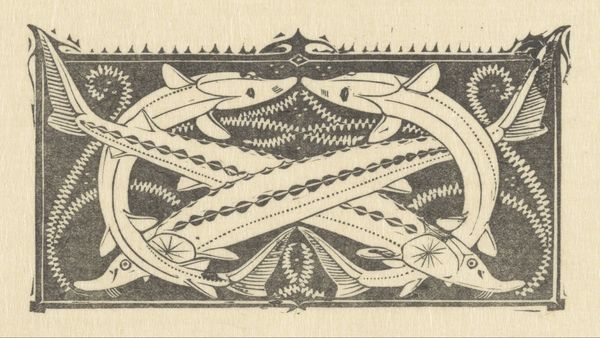
lithograph, print
#
art-nouveau
#
lithograph
# print
#
landscape
#
figuration
#
linocut print
#
decorative-art
Copyright: Public domain
Editor: This is a lithograph print, titled "Illustration from In Childhoods Country," created in 1896 by Ethel Reed. The limited color palette, just shades of blue, gives it a dreamlike quality. What kind of symbols and imagery can you identify? Curator: What strikes me immediately is the echo of innocence. Notice how the stylized figures of children are nestled within a rose thicket, almost protected or perhaps imprisoned by their own idealized representation. How do you interpret the recurring motif of the rose, considering the context of Art Nouveau? Editor: Roses often symbolize love and beauty. Do you think they could also represent the fleeting nature of childhood, something beautiful but transient? Curator: Precisely! Art Nouveau, at the time, reveled in organic forms but also grappled with anxieties about modernity and the loss of traditional values. These roses are not merely decorative. Their thorny presence might hint at the bittersweet transition from innocence to experience, a poignant cultural memory woven into this seemingly idyllic scene. The repetition—almost like a wallpaper—does it create a feeling of claustrophobia for you? Editor: A bit, yes! Especially considering their doll-like appearances. It feels almost like they are trapped inside an idea of childhood. Curator: And does it challenge how we perceive childhood today? Perhaps we have updated notions about youth, compared to Reed's late 19th-century lens? The imagery really triggers questions of what values are projected onto children, across cultures and across time. Editor: I never considered the cultural implications embedded in children's illustrations like this. Thank you for enriching my understanding of the piece. Curator: It is also so beautiful. Exploring visual culture means digging deep into meaning and memory.
Comments
No comments
Be the first to comment and join the conversation on the ultimate creative platform.
